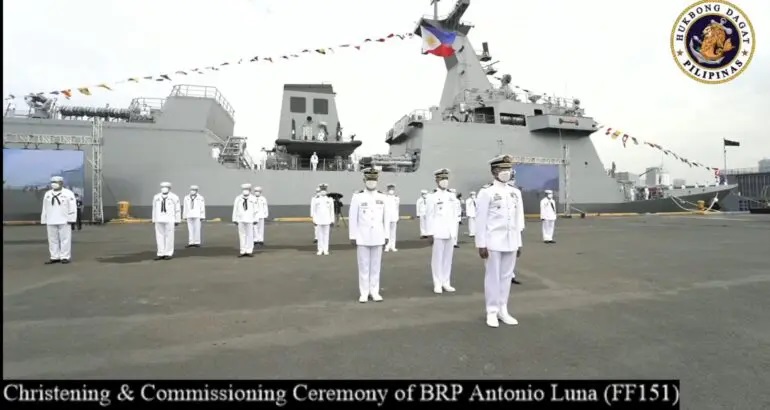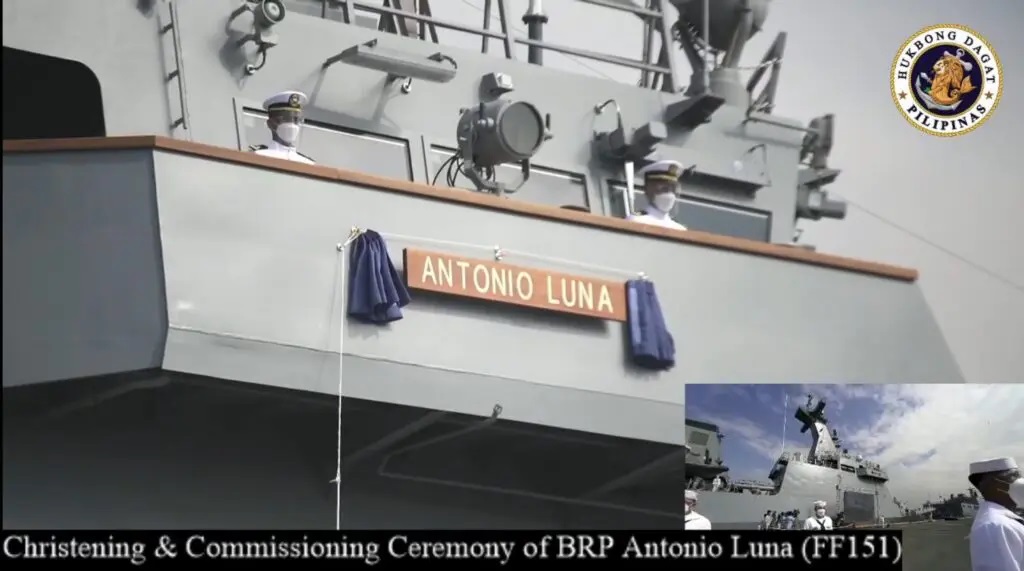Philippine Navy Commissions New Jose Rizal-Class Frigate BRP Antonio Luna
By Xavier Vavasseur

Philippine Navy Commissions New Jose Rizal-class Frigate BRP Antonio Luna.
The Philippine Navy commissioned its second Jose Rizal-class frigate today, during a ceremony held in Manila in presence of Secretary of National Defense, Delfin Lorenzana. BRP Antonio Luna (FF 151) joins her sister-ship which was commissioned in July 2020.
The first ship-in-class, BRP Jose Rizal (FF 150) was delivered in May 2020 and commissioned in July 2020. The two frigates of the class are the most modern surface combatants of the Philippine Navy fleet.
The contract for the construction of two light frigates was signed between the Philippines and South Korean shipbuilder Hyundai Heavy Industries (HHI) in October 2016. The contract was signed following the victory of HHI in an international tender. The tender purchase value of the two ships was determined to be 15.744571584 billion Philippine pesos (about $ 311 million). This price point is for the ship only (weapons systems not included).

Philippine Navy Commissions New Jose Rizal-class Frigate BRP Antonio Luna.
According to the shipyard, the frigates for the Philippines are based on an HHI design, which is a smaller version of the Incheon frigates (FFX-I) being built for the ROK Navy fleet. The Philippine frigates have a standard displacement of about 2,600 tons and a length of 107 meters. The diesel main power plant under the CODAD scheme should provide a full speed of 25 knots, a cruising range of 4500 nautical miles at a speed of 15 knots.
The Philippine frigate have four anti-ship missile launchers (presumably, for South Korean SSM-700K Haeseong / C-Star by LIG Nex1), two SIMBAD-RC short range SAM system by MBDA, a 76-mm main gun, one Aselsan SMASH 30mm secondary gun, two 324-mm three-tube torpedo launchers (presumably for K745 Chung Sang Eo / Blue Shark torpedoes by LIG Nex1). They are fitted for but not with an 8x cell VLS for surface to air missiles. The ship has an helicopter deck and hangar to accommodate a Leonardo AW159 Lynx Wildcat helicopter (two such helicopters have been ordered for the Navy of the Philippines). Most of the sensor and electronic suites are provided by Thales.
Source: Naval News
